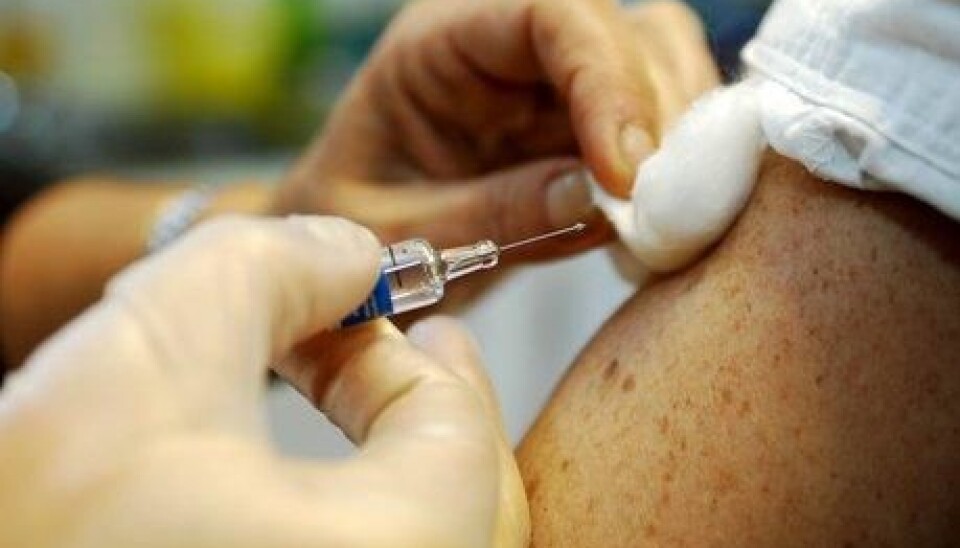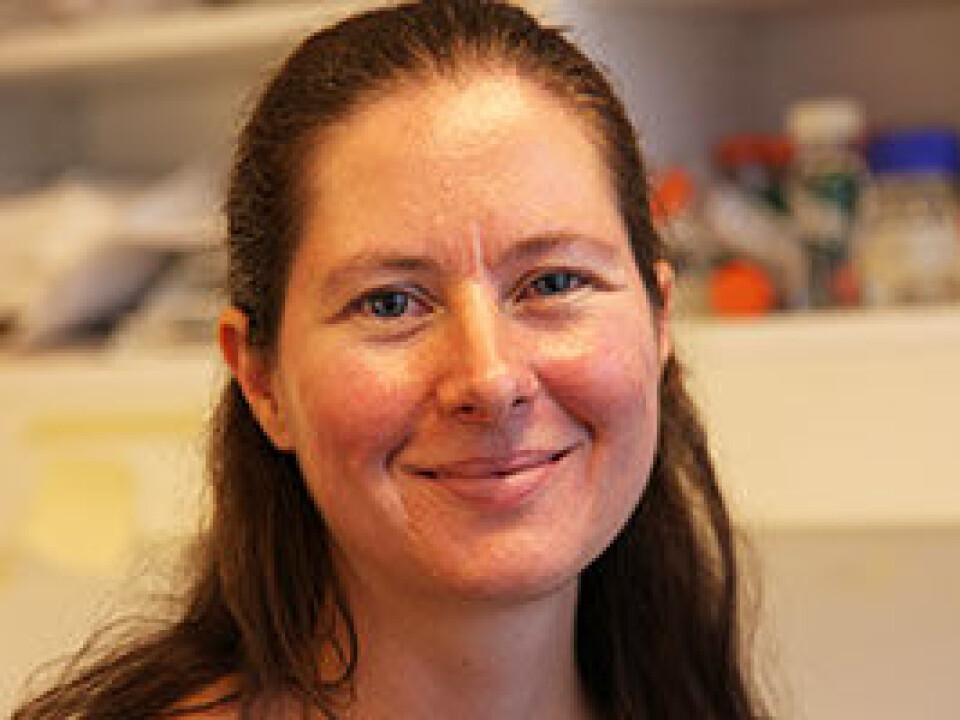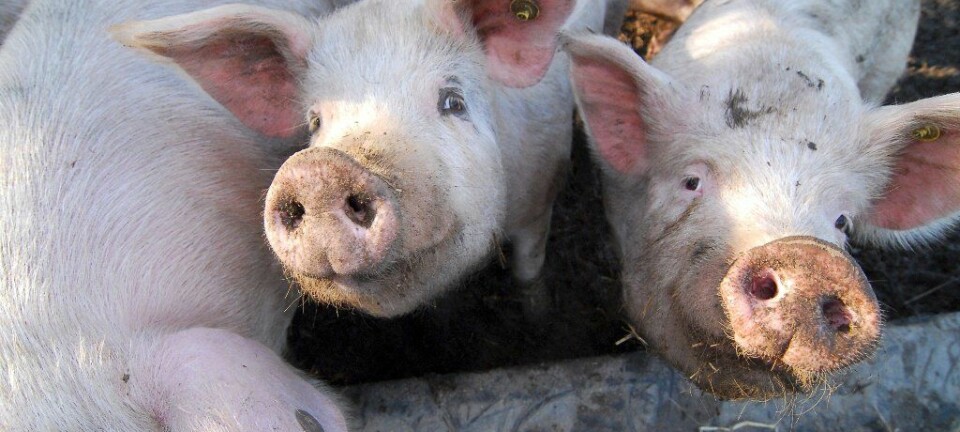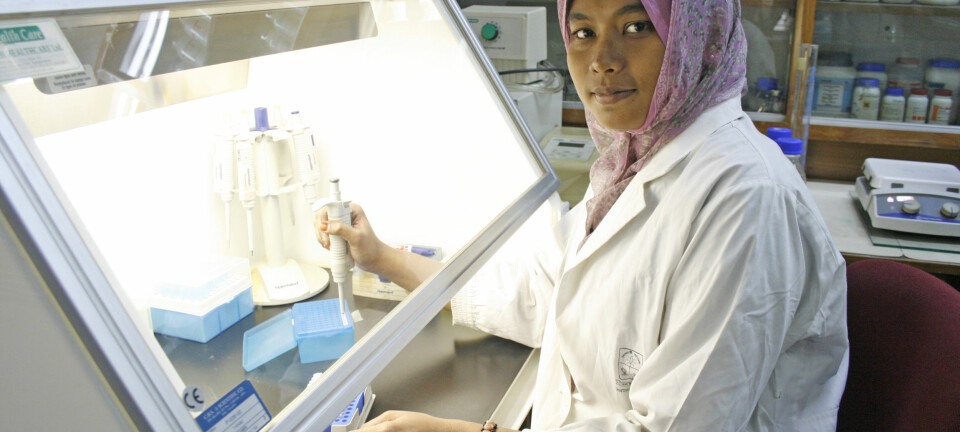An article from University of Oslo

Using DNA against flu
Researchers have developed a new influenza vaccine produced in only a couple of weeks – and perhaps even completely free of side-effects.
Denne artikkelen er over ti år gammel og kan inneholde utdatert informasjon.
A simple vaccination with DNA can provide full protection against influenza in mice. The aim is now to produce a similar vaccine for people. The vaccine can be produced in a jiffy if a new pandemic influenza virus should arise.
Shorter production period
"We currently have vaccines that we administer every year against seasonal flu," says research scientist Gunnveig Grødeland, who recently took her PhD at the University of Oslo.
However, these are less than optimal.

"Today’s vaccines are being produced in chicken eggs and take about a year to make. Based on earlier influenza viruses, the World Health Organization guesses what strain of influenza will strike next year and produces vaccines based on this educated guess," says Grødeland.
Sometimes they hit the bullseye. Other times, they miss the board completely.
Furthermore, we have a problem should a pandemic break out and generate an acute need for a vaccine. Nobody can afford to wait for almost a year for protection when a deadly virus is advancing upon us.
Using DNA to administer the vaccination drastically reduces its production time.
"In a single month we managed to make a vaccine that provided protection against swine flu in mice," she says.
Right on target
When you become infected with influenza, the protein haemagglutinin on the surface of the influenza virus will bind itself to cells in your body. To prevent this from happening, vaccines are made to produce antibodies against haemagglutinin.
"The DNA vaccine we have been testing consists of haemagglutinin and a targeting mechanism which is intended to ensure that the haemagglutinin finds the correct immune cells," explains the researcher.
A DNA vaccine makes the cells absorb the DNA and start producing the vaccine protein themselves.
"The targeting mechanism guides the vaccine protein to the correct immune cell –where it starts making antibodies against hemagglutinin. Just as we intended," says Grødeland.
The advantages of using this method are many. One of them is that the risk of adverse side effects is significantly reduced, because there is no need to add any further substances to the vaccine in order to increase its effectiveness.
One jab will do
Do you remember swine flu? Do you remember the fear of infection, the mood and the clinical picture?
An influenza pandemic is always unexpected and may be fatal. In theory, today’s vaccines will allow us to prevent many such pandemics. However, the production period is such that its effectiveness is of no consequence. Furthermore, a deadly influenza virus is often also fatal in birds. Consequently, the vaccine cannot be cultivated in eggs as it is today. By administering the vaccine as DNA the obstacles are cleared away.
"The trials on mice indicate that a single jab provides extremely high levels of antibodies and long-term protection," says Grødeland.
This is something completely new. Never before has a DNA vaccine produced such major long-term antibody responses. Now that a T cell response is also demonstrated, success is close at hand, for this provides a certain level of cross-protection which gives the vaccine an even wider field of application.
Protection against several strains
"Our trials have included two different strains of H1 influenza - swine flu and an older strain from 1934," says Grødeland.
These strains are not particularly similar to one another. Nevertheless, the trials showed that the vaccine gave a level of protection against both.
Cross-protection is particularly important for seasonal flu.
"Every year we see the emergence of similar types of flu that mutate. Our vaccine provides specific antibodies against the strain of influenza for which it is intended. In addition, it provides T cell responses against a wide range of similar strains. If we vaccinate against one particular strain, the T cells will also protect against the other strains," explains Grødeland.
Admittedly, the vaccine cannot prevent all symptoms. However, they are significantly reduced.
It is also very cheap to produce. And not only that – the vaccine can also be stored at room temperature, so that it may be distributed and stored without worrying about the risk of deterioration.
"This is extremely important in developing countries," says Grødeland.
Well targeted and pure
Until now, DNA vaccines have been ineffective. The scientists have had to resort to sky-high dosages and numerous vaccinations in order to achieve immune response. The vaccine is now targeted, which means that the dosages can be drastically reduced.
Moreover, the targeting means that the vaccine is free of adjuvants – agents that are normally added to vaccines in order to increase the immune response. Consequently, the risk of side effects is virtually zero.
"It is probable that in the past, it was the addition of adjuvants that caused the adverse effects of the vaccines," says Grødeland.
"All of the components that make up this vaccine are already known to us. Furthermore, we only use the surface protein haemagglutinin in the vaccine, so there is no risk that the virus will be able to infect cells or mutate to another variant. Haemagglutinin produces antibodies only against itself – which is exactly what we want. This means our work has been successful."



































